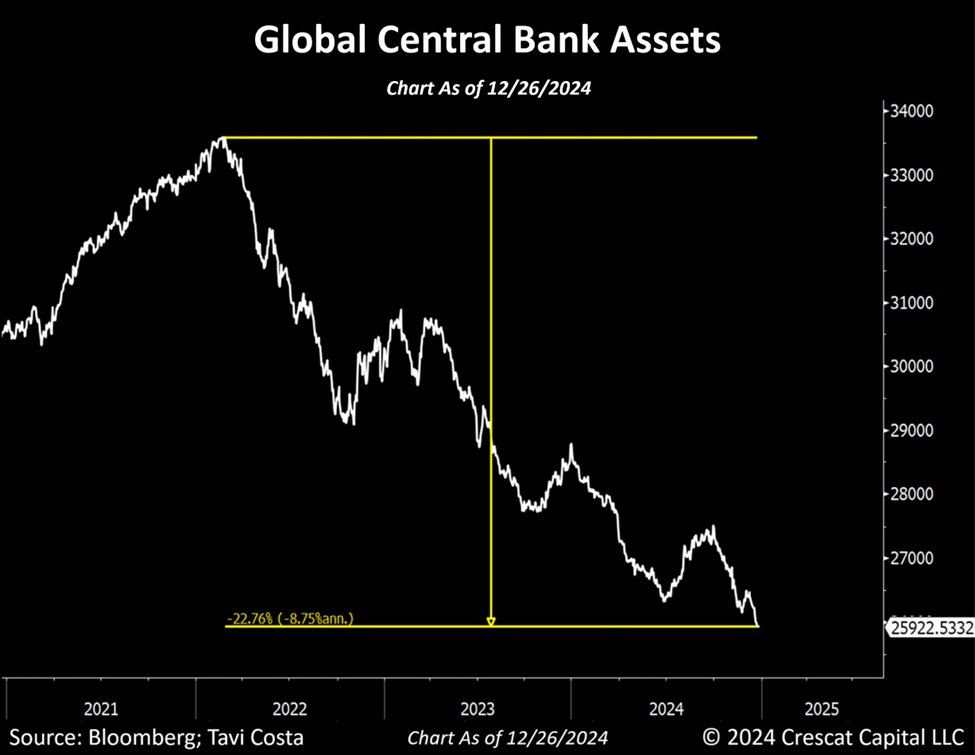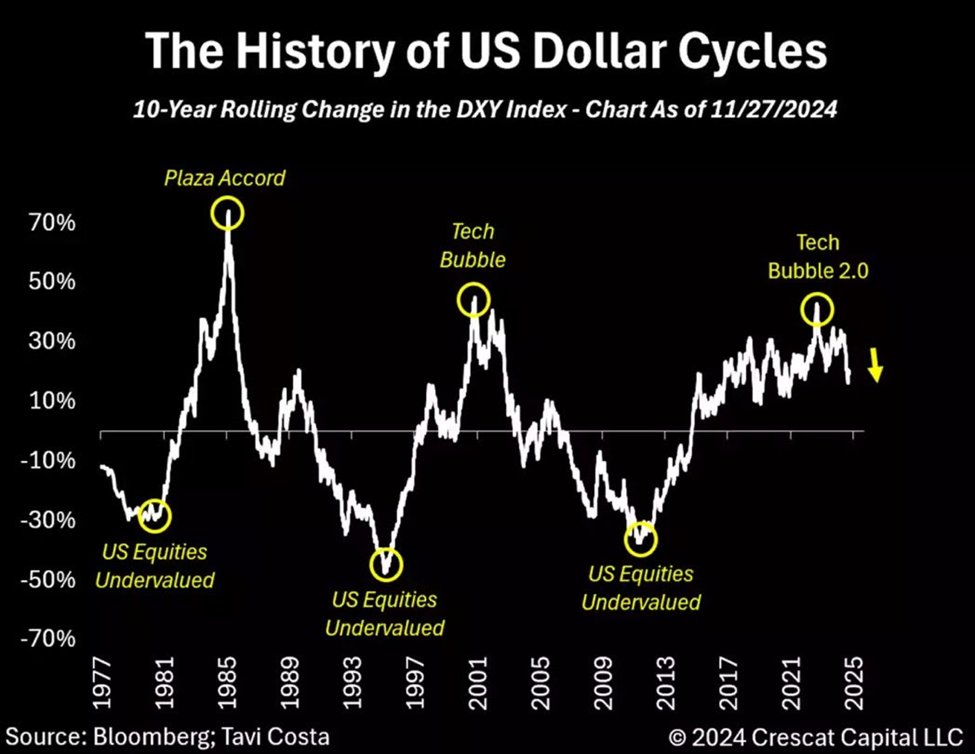The recent escalation of Trump’s tariff policies has sent shockwaves through the markets. While China’s DeepSeek initiative had already rattled risk assets, Trump’s aggressive stance is fueling further uncertainty. Additionally, optimism surrounding potential Federal Reserve rate cuts is fading. Kevin C. Smith, CEO of Crescat Capital, weighs in on these critical developments.
The Future of the U.S. Dollar and Global Economy
Kevin C. Smith, founder and CEO of Crescat Capital, warns that this level of economic aggression could have severe consequences as the global economy remains dependent on U.S. dollar dominance. With global central bank reserves hitting a four-year low, Trump’s strategy could be a major gamble.
Smith suggests that the dollar’s increasing pressure on other currencies could lead to an organic devaluation of the USD. He believes this outcome is inevitable and that the U.S. dollar is nearing its cyclical peak.
“More importantly, global central bank reserves have reached their lowest point in four years. This situation stems largely from the suffocating strength of the U.S. dollar. We believe that a coordinated or organic depreciation of the USD against other currencies is inevitable.”

Smith also highlights that declining fiscal stimulus and structurally low interest rates—designed in part to ease government debt burdens—could serve as the primary catalyst for the USD’s decline in 2025. However, he points out that currency movements are always relative, emphasizing that no major economy, including Japan, Canada, the Eurozone, the UK, or Australia, faces the same necessity as the U.S. to maintain a 5% GDP growth just to sustain its debt obligations.
The Impact of Tariff Policies
Smith also stresses that Trump’s tariff increases could cause short-term economic disruptions. On Friday, Trump downplayed these effects, while the White House reaffirmed its commitment to the policy. Starting Tuesday, prices on 33% of U.S. imports will rise under Trump’s directive, including a 10% tax on Chinese goods.
Disruptions in supply chains could impact key sectors such as agriculture and automotive. The U.S. currently maintains $46 billion in agricultural trade with Mexico and $97 billion in energy trade with Canada, both of which face growing uncertainties.

Long-Term Outlook for the Dollar
Smith underscores that one often overlooked factor in the USD’s recent strength is the role of trade policies. While Trump-era tariffs could cause short-term market shocks, they are merely one component of a broader policy agenda. Scott Bessent, the newly appointed U.S. Treasury Secretary, has also stated that Trump’s vision of a weaker reserve currency does not contradict his broader economic strategy.
“Overall, risks to the U.S. dollar appear asymmetrically tilted to the downside. Even if short-term fluctuations cause an initial appreciation, the longer-term trajectory is likely to be one of depreciation. If this scenario unfolds, it could mark one of the most profound macroeconomic shifts since the Global Financial Crisis.”
As uncertainty looms, investors and policymakers will be closely monitoring these trends. Stay updated with Dey There for expert insights on the evolving global economic landscape.



















































































































